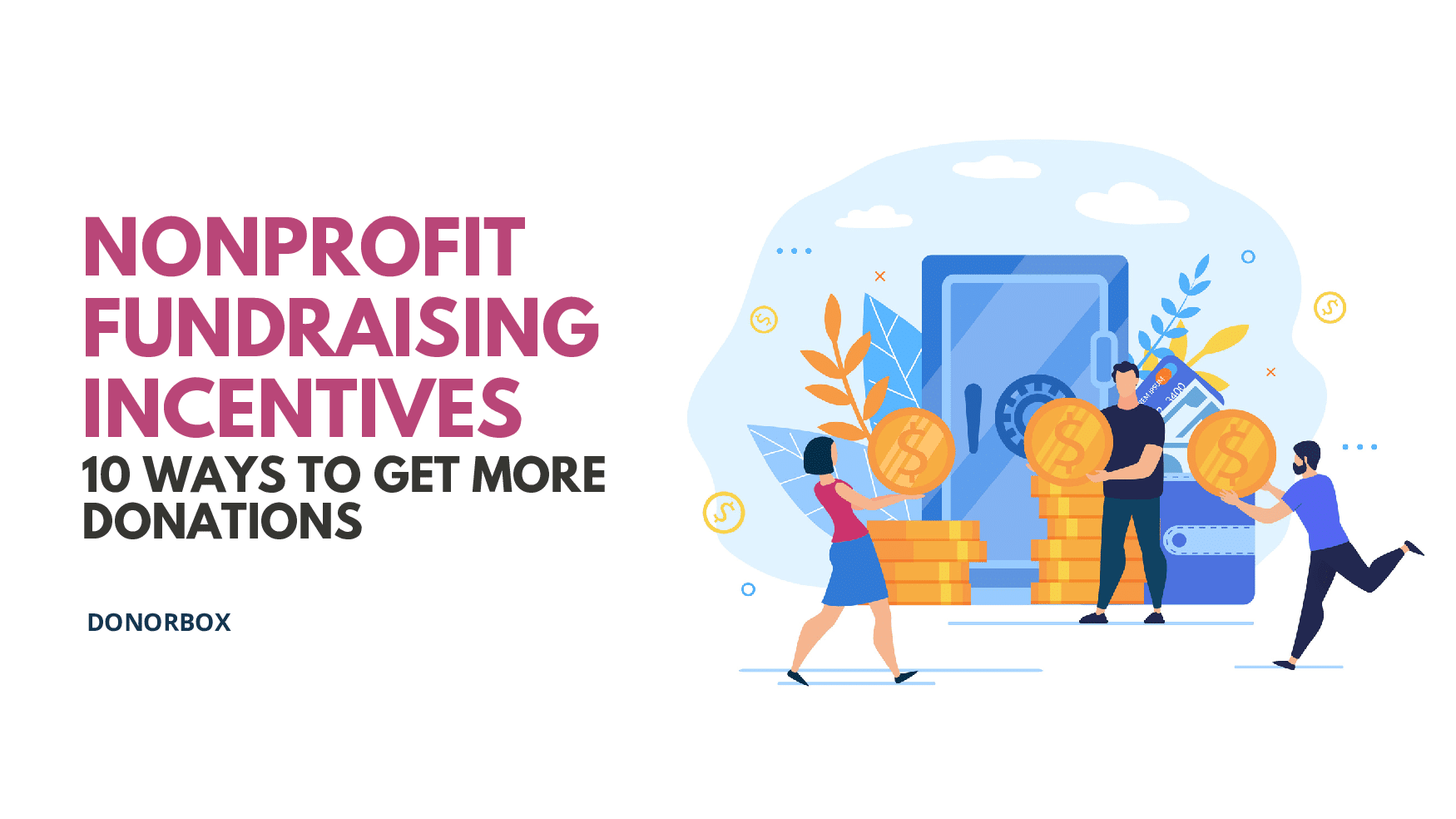No matter how hard a nonprofit works to raise support, awareness, and money for its cause, sometimes, it’s just not enough to inspire prospective donors to give. Some prospective donors are choosing between three to four nonprofits to which they’ll donate an annual gift. Few of them have been donating to your nonprofit for a while, but haven’t felt truly appreciated or recognized and are slowly closing their wallets. Some have so much on their plates that they’ve simply forgotten about your nonprofit and its critical mission.
These ‘giving ruts’ are where fundraising incentives come into play. Many nonprofits are hesitant to spend the time or money on developing strategic and creative reasons for individuals to give. But we promise that fundraising incentives are absolutely worth the investment!
In this blog, we’ll walk you through everything you need to know about fundraising incentives, including 10 ideas your nonprofit can try.
What are Fundraising Incentives?

Fundraising incentives are any physical products, special offers, or opportunities a nonprofit can use to inspire its supporters to make a donation. The best fundraising incentives express deep gratitude for a nonprofit’s supporters, establish or maintain supporter trust, and illustrate that the nonprofit cares about its supporters on a personal level.
Your team may work tirelessly to cultivate, solicit, and steward both existing and prospective donors, but sometimes individuals simply lack the motivation or funds to engage. Just as corporate consumers are more motivated to purchase items when they receive a discount code or coupon, donors may often need an extra boost to write that donation check.
If you’re feeling hesitant about the benefits that a donation incentive ultimately brings to your nonprofit – don’t! Incentives increase donation numbers and amounts, which increases your nonprofit’s ability to cultivate positive, lasting change for people in need. It’s a win-win-win situation!
Do Fundraising Incentives Increase Nonprofit Donations?

The short answer? Yes.
They absolutely do, and they are absolutely ethical because they ultimately aid in giving back to your mission and those that you serve.
The key to making fundraising incentives work is really understanding your donor’s preferences. Research has shown that the donors who will most appreciate rewards for their generosity are prospective donors or ones who have yet to give in support of your mission. Some supporters are concerned with their social status and will want to share their giving behavior with their personal networks and be recognized for their giving by your nonprofit. Some are more private and do not want to be rewarded because it makes them feel as though their gifts are less authentic or meaningful.
Maximizing the potential impact of fundraising incentives is all about knowing what types of incentives make sense, if any, for which types of donors. To determine this, try simply sending out a survey to your donor pool, asking them if upon giving a gift they’d like to be recognized in some way.
When a donor gives for the first time, ask them this question in your “thank you”, and make note of their preferences immediately. Take note of how donors respond to recognition: if on social media, are they commenting, re-sharing, or liking the post? If via a newsletter or email, are they sharing these resources with their family and friends?
It’s really as simple as that. Plus, giving donors the chance to speak to their incentive preferences rather than forcing an incentive upon them, will cause the donor to feel appreciated and that you’re going the extra mile to meet their needs.
10 Fundraising Incentives Ideas for Nonprofits
1. Provide branded event merchandise
Who doesn’t love some fun merch? This type of fundraising incentive may be difficult to personalize but is still an excellent gift option for donors. Consider offering different incentives to donors who give at higher levels. For example, you might give a branded, personalized gift basket to a major donor, but accessories like pens or keychains to your lower-tiered donors. Merchandising is an excellent incentive strategy for in-person events. Giving your supporters something to take away from the event serves as a friendly reminder of your organization’s existence and critical mission.
2. Promote crowdfunding
Enabling your supporters to get directly involved in your fundraising strategy is a great way to inspire them to give themselves. Feeling personal accountability to your mission and the power of social influence are great motivators for many supporters.
Crowdfunding campaigns are when a group of supporters, rather than just one or two individuals, funds your nonprofit’s program or project. Donorbox is an excellent resource for setting up a crowdfunding campaign, allowing you to create one in just 15 minutes, send campaign updates to donors and subscribers, and provide social proof for donors that should catalyze donation inflow. Here’s a good example of a crowdfunding campaign you can refer to for creating your own –
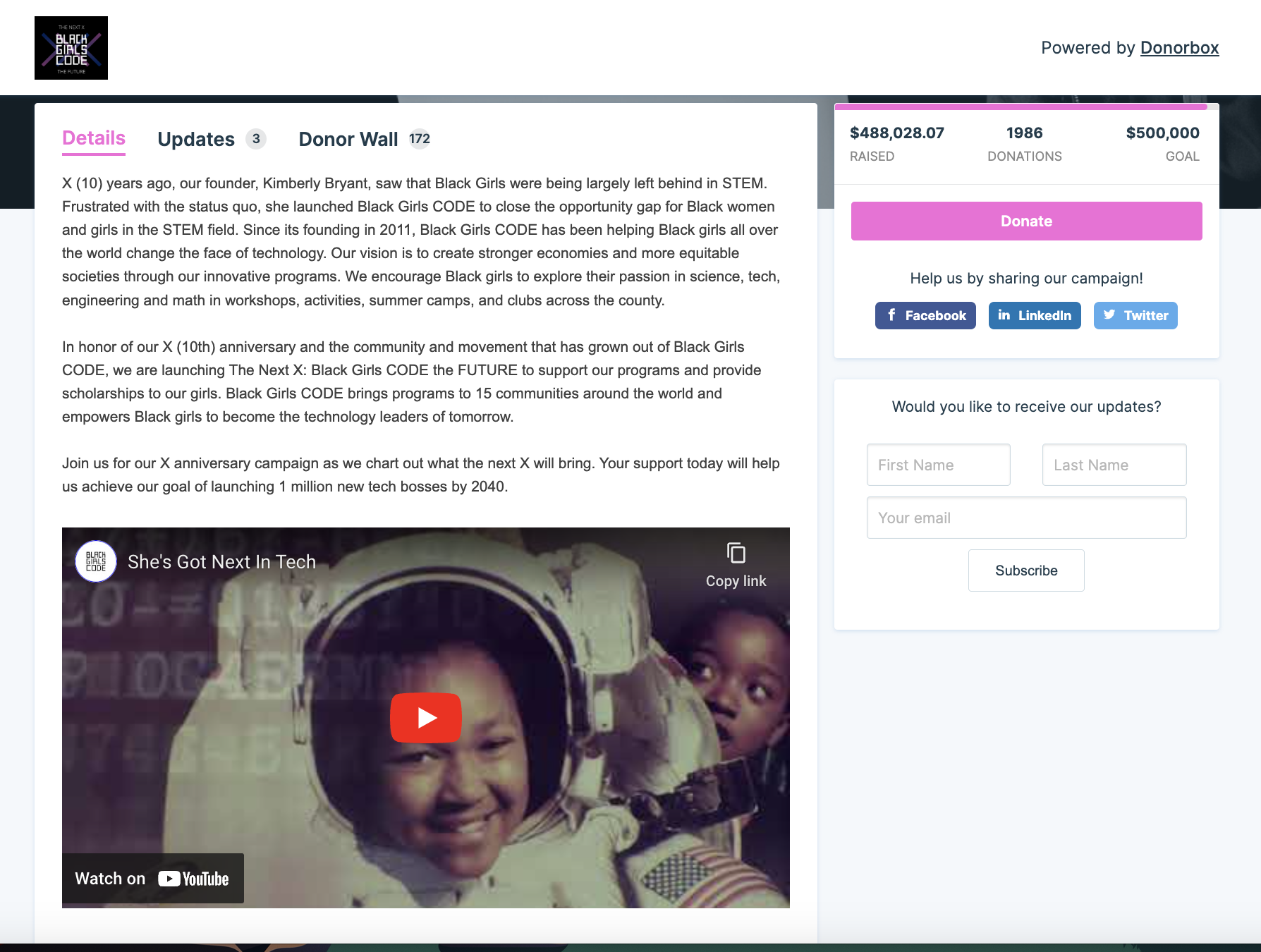
Peer-to-peer fundraising is a multi-faceted approach to crowdfunding. It involves enabling individuals to create personal fundraising pages on your nonprofit’s behalf. The individual then shares their fundraising campaign with their own network, increasing donations and expanding your nonprofit’s range of visibility.
3. Offer quality auction items
Make both virtual and in-person auctions exciting for your supporters! Engage in heavy in-kind donation fundraising in the months leading up to your event to give your team enough time to solicit, market, and build momentum for the most attractive gifts. In-kind donation fundraising involves reaching out to organizations of all types and industries – stores, restaurants, bars, airlines, event spaces, museums, cruise lines, the list goes on – and asking for a donated item, as opposed to a direct monetary gift.
Soliciting and receiving these gifts is only the first step to ensuring a quality auction. You’ll need to be sure to spend ample time marketing these auction items, as well. This may include sending special emails and social media announcements about the items.
Pro tip: Be creative! Consider strategies to build momentum for your best auction items, like providing sneak peeks of these items on social media and eventually, a full “reveal.”
4. Create a VIP donors club
Not only do most major donors love to feel special, but they deserve to! Major donors regularly demonstrate their strong affinity for your nonprofit’s mission. They may have supported you in a variety of ways – from large, direct monetary gifts, to peer-to-peer fundraising, advocacy, and personal networking efforts.
By creating an exclusive VIP club for your most dedicated donors, your nonprofit can properly honor and express sincere gratitude for their support. Most nonprofit VIP clubs come with special perks and are membership-based. They require that a supporter makes a donation of a certain amount or higher. Perks can include things like invitations to upscale events, free event parking, naming rights, discounts on your nonprofit merchandise, and more.
For example, the American Cancer Society (ACS) established the “Laureate Society” to honor individuals and family foundations that give $10,000 or more annually. Member benefits include a Benefactor Newsletter highlighting ACS and stories of special interest, invitations to local and national ACS events, a tour of the ACS Hope Lodge Facility, and meet-and-greet opportunities with ACS researchers.
5. Enable gift matching
Gift matching involves companies matching the amount of a donation an employee makes to a nonprofit. This is a perk for the employee – and for the nonprofit! The amount of money that corporations will match varies. Many match an employee’s donation 1:1 up to a certain threshold. Researching companies that have matching gift programs and marketing these programs to their employees can be effective. This way, you can multiply the number of donations your nonprofit receives each year.
Pro tip: Promote gift matching to your prospective and existing donors in a way that shows them the double/triple impact that their donations will make. Here, the ability to create a substantial impact for your beneficiaries is the incentive you’re offering to them. Make it clear by telling stories and showing past impact.
Double the Donation is a leading matching gift tool designed to make matching gifts easy. It features a search widget that enables donors to find out if their employers will match their donation, and how much money their employers will match.
Donorbox has integrated with Double the Donation to make the process simpler for nonprofits and their donors. Learn more about matching gift programs in this blog!
6. Recognize donors on key channels
Social media is an extremely popular, low-cost way to recognize your existing donors and to incentivize prospective donors to give. Before highlighting donors on social media, you should receive permission to do so. Once this permission is received, there is a multitude of ways that you can increase donation numbers and sizes:
- Thank donors directly on social media. Plan out your content calendar so that once a month, you make space to recognize new donors, recurring donors, or long-term donors separately.
- Tag volunteers or donors in photos from nonprofit events, projects, or programs.
- Ask questions, post surveys, or set up polls to engage donors while receiving valuable feedback for your nonprofit.
- Share impact stories of the impact of your work that was only possible for your donors. If a donor (organizational or individual) gave directly in support of one particular project, note this connection in your post.
- Highlight your current fundraising progress, current, and future goals, or past performance.
- Encourage donor comments, and respond to these comments! Donors will feel appreciated knowing that you didn’t just “post to post”. Instead, your nonprofit genuinely cares about developing genuine donor relationships.
7. Highlight the tax benefits
While many donors give out of the goodness of their hearts, it’s important to remember that some give to receive tax deductions. If your organization is a 501(c)(3) nonprofit, gifts of $250 and more are eligible for tax deduction.
Point this out on your materials! Donorbox makes it easy to share your 501(c)(3) status right on your donation page, the way BluePath did!
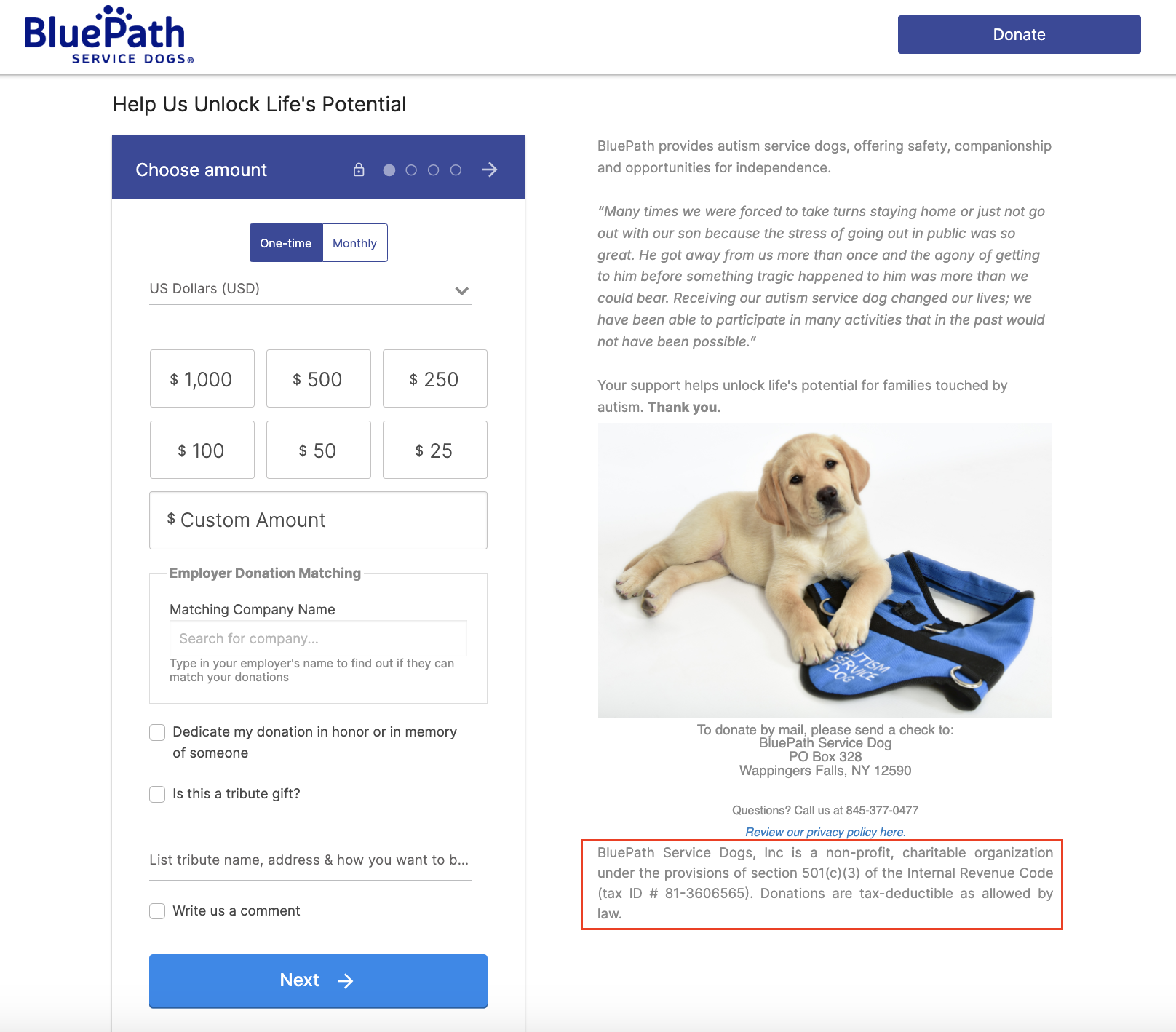
Build Your Donation Page
8. Create a membership program
A membership program is a great way to incentivize donors with tiered benefits related to the amount given. This helps provide a steady income for your organization while donors enjoy regular member perks and create a deeper, lasting relationship with your cause.
Donorbox makes it easy to create a robust membership program with multiple member tiers, the way Asclepius Snakebite Foundation did! Their incentives included quarterly newsletter, stickers, conference registration, and more.
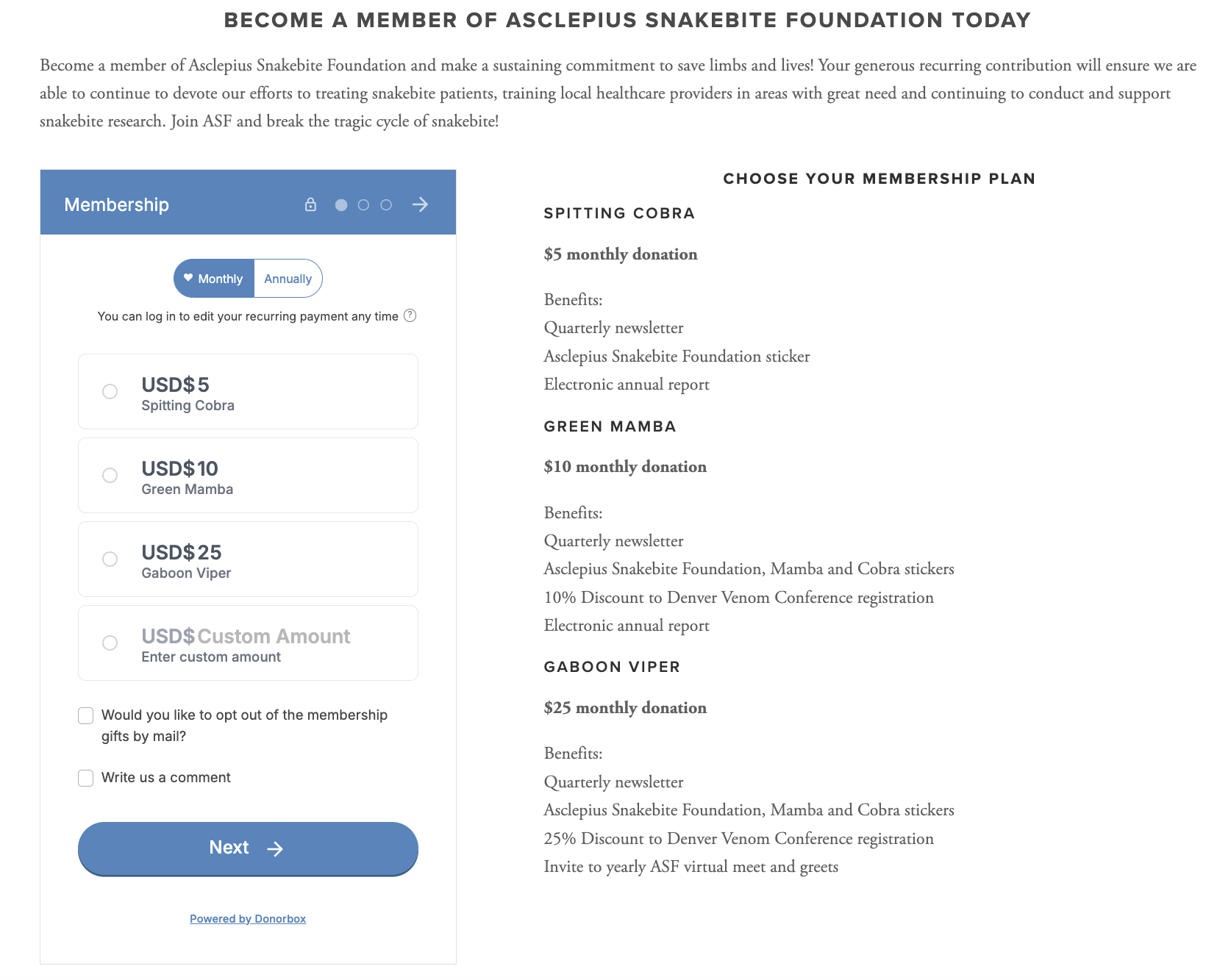
9. Offer mission-based incentives
Mission-based incentives use your nonprofit’s mission to inspire supporters to give. In doing this, they validate the importance of your mission and programs. And they establish credibility and trust with supporters. There are many types of mission-based incentives your nonprofit may employ to inspire your supporters:
- Showing how your nonprofit really operates behind the scenes is a great way to inspire trust and curiosity in prospective donors. Behind-the-scenes tours of your office or program facility are great examples of this tactic! Consider bringing your team to these tours for a meet and greet.
- Donor to Beneficiary Partnership programs are perhaps one of the most intimate ways to involve donors in your mission. If you’re operating a foster care nonprofit, for example, you might consider partnering a prospective donor with a child that your nonprofit is trying to support. Consider allowing your prospective donor to meet a child or the foster parents who are supporting that child. Remember to always get permission from your beneficiaries, first and foremost. Also, ensure that you engage in these tactics safely and legally.
10. Run a raffle
Raffles are low-cost, momentum-generating, and incredibly exciting events for existing and prospective donors – they’re also excellent fundraising incentives! Consider implementing a raffle into one of your upcoming fundraising campaigns. You can offer either a single grand prize for the raffle or several prizes, depending on your resources and how much money you’d like to raise for the campaign.
You can even host a virtual raffle to keep the cost down! Check out how New City Arts used Donorbox Events to sell tickets to their Spring raffle.We love how they included information about each raffle basket right on their events page. Donorbox Events handled distributing tickets and receipts via email, allowing this organization to streamline their raffle process!
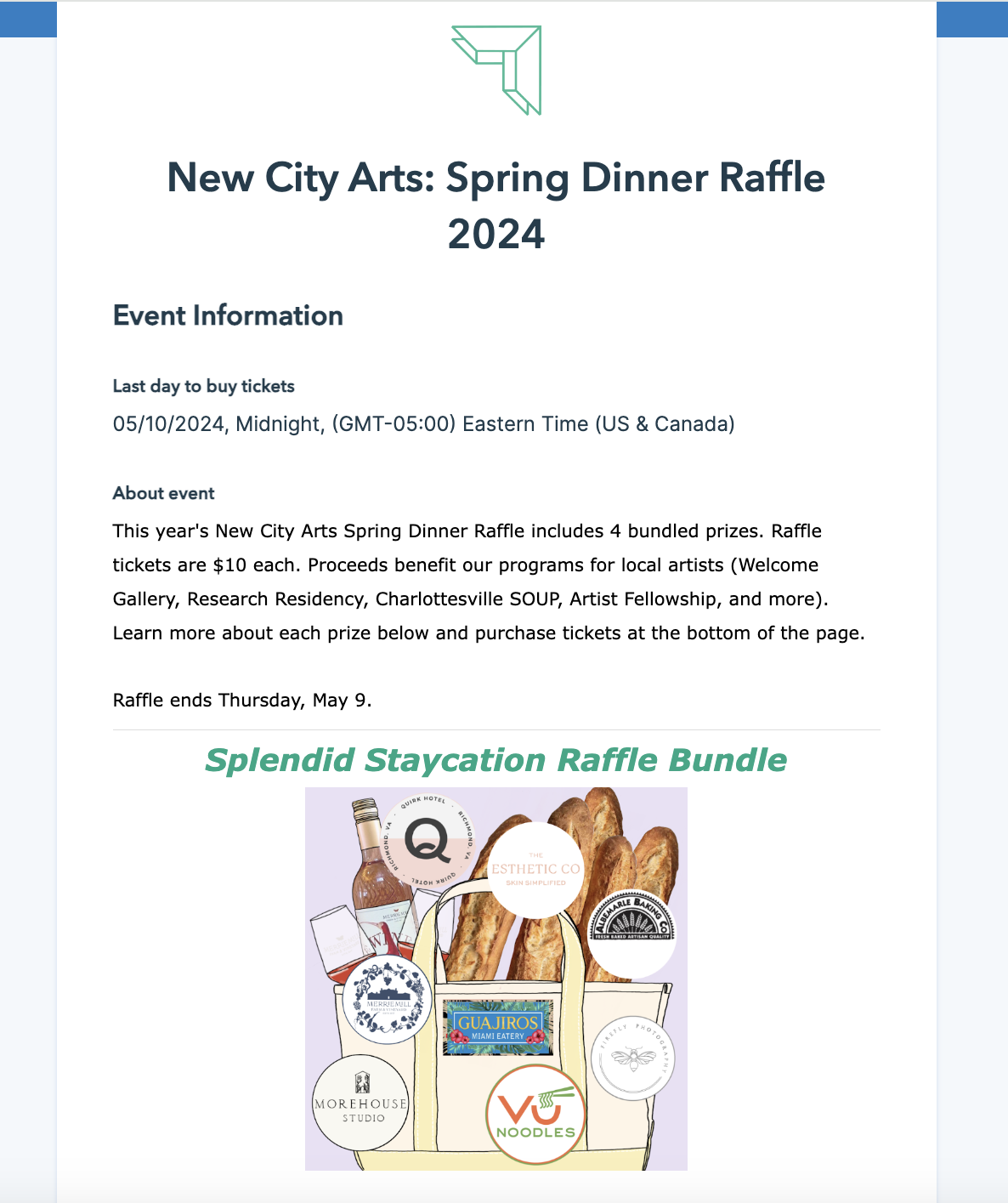
Create Your Event
Over to You
Whether you’re an established nonprofit or just getting started, taking a step back to design and implement a consistent and creative donation incentives strategy is well worth the investment. From auctions to societies and clubs, social media plugs, and emotional mission-focused efforts, fundraising incentives will give your donors a reason to give back, time and time again.
To learn more about nonprofit fundraising, tips, and best practices, please visit our blog. Donorbox offers simple-to-use, effective tools to raise more. Learn about all of our features and sign up today!

